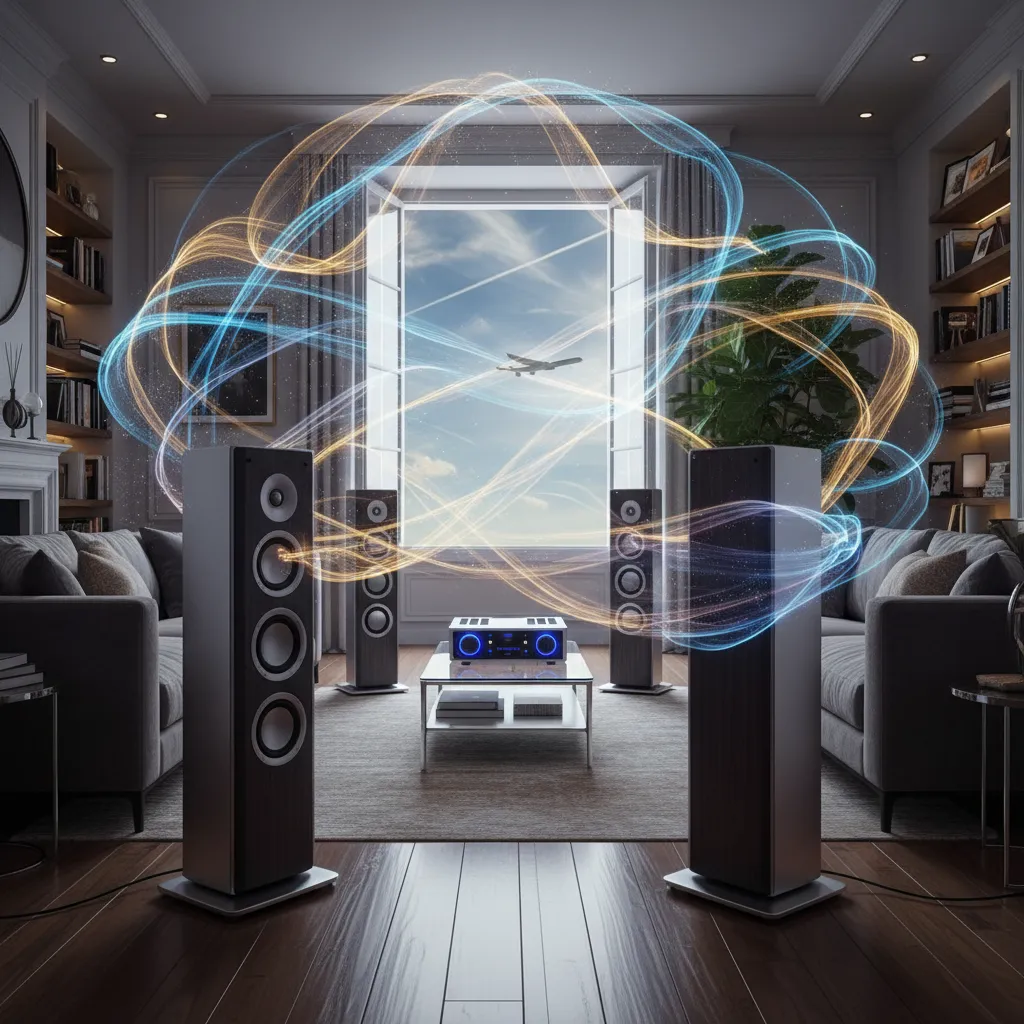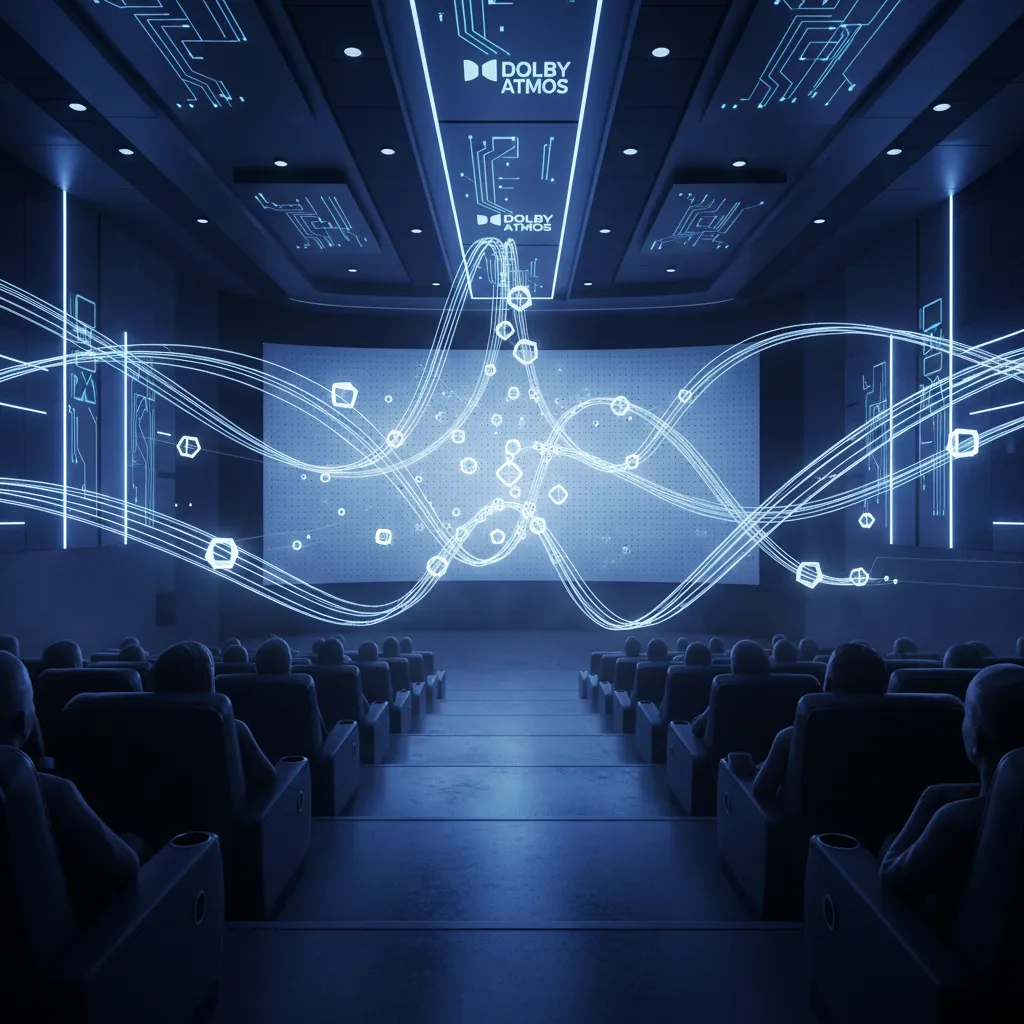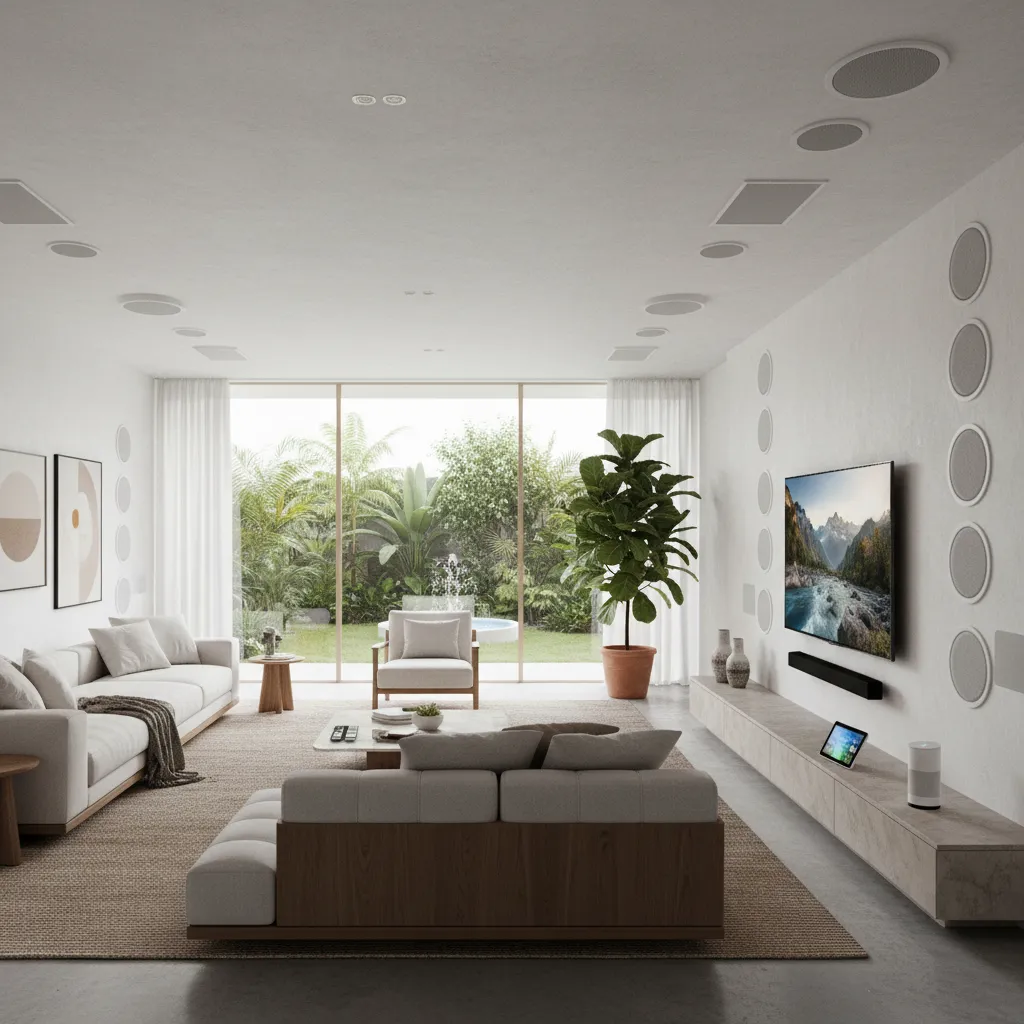Picture this: you're midway through a movie, popcorn in hand, and the sound of a buzzing fly zips straight over your head… but you're at home. Hi, I’m Caleb Denison (and also, definitely not Caleb), and today I’m obsessed with the way Dolby Atmos turns basic living rooms into mini sonic playgrounds. Before we jump into technology, let's reminisce: my first taste of surround sound was Jurassic Park’s T-Rex roar rumbling my friend’s parents’ floorboards. What about you—what movie magic made you say ‘whoa’ the first time?
The Surround Sound Journey: From Floorboards to Flybys
Let’s rewind to the days when surround sound systems first started turning living rooms into mini movie theaters. If you remember the buzz around five point one (5.1) surround sound, you know it was a game-changer. Suddenly, sound wasn’t just coming from your TV—it was wrapping around you, pulling you into the action. But as revolutionary as it felt, traditional surround sound had its limits, and understanding those is key to appreciating just how far we’ve come with today’s technology.
Why 5.1 Was a Revolution (and a Limitation)
The 5.1 surround sound evolution brought five channels—front left, center, front right, surround left, and surround right—plus a subwoofer for those deep rumbles. For most of us, this was our first taste of real immersion. You’d hear footsteps creeping up from behind or a car zooming past, and it felt like magic. But here’s the thing: in both home theaters and commercial cinemas, these “channels” were fixed. Each channel sent the same sound to every speaker assigned to it, whether you had one speaker or eight.
So, if you were in a commercial theater, you might notice a whole wall lined with speakers. In fact, theaters often use eight or more speakers per channel to make sure everyone gets the same experience. But all those speakers on, say, the left wall? They’re playing the exact same sound at the exact same time. It’s more about coverage than precision. In your living room, you probably had just one speaker per channel, but the principle was the same—sound was tied to channels, not to specific spots in the room.
The Home Theater vs. Cinema Experience—More Speakers, Same Channel!
That’s where the difference between home and cinema surround sound systems really stands out. At home, your 5.1 or even seven point one (7.1) setup might use six or eight speakers total. In a commercial theater, there could be dozens, but they’re still grouped by channel. When seven point one came along, it added two more rear channels for extra immersion. Now, you could hear things happening behind you, not just beside you. But again, all the speakers in a channel played the same audio. The sound could move from the front to the back, but it couldn’t swoop or swirl with true freedom.
Personal Anecdote: The First Helicopter Flyby
I’ll never forget the first time I heard a helicopter swoop behind me in a theater. The sound started in front, moved to the left, then seemed to fly over my shoulder and disappear behind me. Even with the limitations of traditional surround sound, it was jaw-dropping. It was, as I often say, “the surround sound you always thought you were getting, but actually weren’t.” The effect was impressive, but if you listened closely, you’d notice that when the chopper hit the left surround, every speaker on that wall lit up at once. It was a wall of sound, not a pinpoint flyby.
Why Dolby Atmos Made Me Wish Rain Could Leak Through My Ceiling
That’s why, when I first experienced Dolby Atmos, it felt like surround sound finally caught up with my imagination. Suddenly, sounds weren’t just moving around the room—they were moving through it, above and below, with pinpoint accuracy. It made me wish rain could actually leak through my living room ceiling, just to match the realism. As I like to say, “
To me, Dolby Atmos is what I always felt like surround sound should have been.”

From Channels to Objects: The Secret Sauce Behind Dolby Atmos
If you’ve ever watched a movie in a theater and felt like the rain was falling right on top of you or a helicopter actually flew overhead, you’ve already experienced the magic of Dolby Atmos technology. But what’s really happening behind the scenes? Let’s break down the real secret sauce: the leap from channels to objects in audio.
Object-Based Audio Explained—What’s with the ‘Fly’ Analogy?
Traditional surround sound systems, like the classic 5.1 or 7.1 setups, work by sending sounds to specific channels. For example, if a helicopter flies from left to right, the same sound plays through all the left-side speakers at once. It’s immersive, but it’s also limited—every speaker in that channel gets the same audio.
Enter object-based audio. Dolby Atmos doesn’t just add more speakers (though it can—up to 128 audio tracks and 64 unique speaker feeds in pro setups). It changes the game by treating each sound as an audio object that can move independently through three-dimensional space. This is where the “fly” analogy comes in:
That fly buzz can be in any one speaker at a time, or any multiples of speakers at a time.
Imagine a single buzzing fly. In an Atmos system, the fly’s sound isn’t stuck in just one channel. It can dart from the center speaker to the left, then up to a ceiling speaker, then over to the right—all seamlessly. The audio renderer uses coordinates and metadata to place that sound exactly where it should be, moment by moment.
Personal Tangent: Why My Cat Started Chasing Invisible Buzzing
When I first upgraded my living room with a Dolby Atmos soundbar, I was blown away by the realism. But I wasn’t the only one. During a nature documentary, a fly buzzed across the room—at least, that’s what it sounded like. My cat, who’s usually pretty chill, started stalking the “fly,” looking up at the ceiling and darting around the speakers. That’s the power of object-based audio: it’s so convincing, even your pets can’t tell the difference between real and virtual.
How Atmos Mixes Let Sound Move Anywhere—Even If You Have 128 Speakers
Dolby Atmos debuted in 2012 with Disney Pixar’s ‘Brave’, and it’s been changing how sound is mixed ever since. In a professional studio—or a mansion, if you’re lucky enough—you could have up to 128 discrete audio tracks, each with its own coordinates. Mixers use joystick-like tools to “steer” these sound objects anywhere in the room, including above and behind you.
- Rain can fall from above, not just around you.
- A helicopter can fly overhead, not just left to right.
- That buzzing fly can circle your head, moving independently through any speaker.
This isn’t just about more speakers—it’s about total control in three-dimensional space. Dolby Atmos technology lets creators craft audio experiences with pinpoint accuracy, making every moment feel real, no matter how many speakers you have.

Bringing It Home: Atmos in Your Living Room and Beyond
DIY Atmos: Upward-Firing vs. Ceiling-Mounted Speakers
So, you want that movie theater sound at home? In a commercial theater, you might have dozens of speakers, but most home theater setups are much simpler. If you’re lucky, you might have a 7.1.4 system—that’s seven speakers around you, one subwoofer, and four height channels (for those overhead effects). But even if you don’t have that many speakers, Dolby Atmos adapts. Your AV receiver or soundbar uses smart processing to position sounds, giving you a surround experience that feels huge, even with fewer speakers.
There are two main ways to get those “height” effects at home:
- Upward-firing speakers: These bounce sound off your ceiling, creating the illusion of overhead effects. Many soundbars, like the Sonos Beam (Gen 2), use this trick to simulate height channels without drilling into your ceiling.
- Ceiling-mounted speakers: For the true enthusiast, installing speakers above you delivers the most convincing three dimensional sound. But let’s be real—not everyone wants to cut holes in their ceiling.
Atmos is flexible. It can scale from a simple 5.1.2 setup (five speakers, one sub, two height channels) all the way up to pro-level systems with over 100 speakers. But here’s the catch: not all “Atmos” experiences are created equal.
Why Your TV’s ‘Atmos’ Label Might Be Mostly Marketing
Here’s where things get a little tricky. You’ll see the Dolby Atmos logo on everything from AV receivers to soundbars—even on TVs that don’t have any special speakers. My friend recently bought an “Atmos-ready” TV, and we tried to recreate that epic movie theater thunderstorm scene. Spoiler: it sounded… fine. Not bad, but nowhere near the immersive bubble of sound you get from a real home theater setup.
That’s because some TVs use virtual Atmos, relying on psychoacoustic tricks to fake spatial audio technology with just two speakers. It’s clever, but it’s not magic. As Dolby themselves put it:
Dolby Atmos is going to provide great sound no matter how many speakers you have.
But remember—more speakers (especially real height channels) mean a bigger, more convincing soundstage. The “Atmos” badge on your TV is often more about branding than true three dimensional sound.
Music, Games, and Streaming: Atmos Goes Way Beyond Movies
Atmos isn’t just for blockbuster movies anymore. You’ll find Dolby Atmos on Apple Music, Tidal, and even in video games. Streaming platforms like Netflix and Disney+ offer Atmos soundtracks, and many gaming consoles support spatial audio technology for a more immersive experience.
Here’s the cool part: you don’t need a room full of speakers. With virtual Atmos, you can get a taste of that 3D sound through a soundbar—or even headphones. Gaming with Atmos is a game-changer, letting you hear enemies above or behind you. And Atmos music? It’s like stepping inside your favorite album.
Just remember: Atmos adapts to your hardware. Whether you have a full home theater setup, a soundbar, or just headphones, the tech uses object audio renderers and smart processing to deliver the best possible surround effect. But the more capable your gear, the bigger and more immersive the sound will be.

Conclusion: So, Is Dolby Atmos Worth Obsessing Over? (And What’s Next?)
Let’s be real—if you’ve ever jumped off your couch because a buzzing fly zipped across your living room (on screen, not in real life), you’ve already tasted what Dolby Atmos can do. That’s the magic of immersive sound: it pulls you right into the action, making every moment bigger, more expansive, and honestly, more fun. So, is Dolby Atmos worth obsessing over? In a word: absolutely.
Atmos isn’t just another audio upgrade—it’s a genuinely new immersive audio experience. Instead of sound coming at you from just the front or sides, Atmos lets every sound—whether it’s a helicopter overhead, rain falling all around, or yes, that infamous fly—move freely in three-dimensional space. Suddenly, your living room feels like a mini movie theater, and your favorite shows, games, and even music tracks become something you can almost reach out and touch. Dolby Atmos tends to sound bigger, more expansive and more three-dimensional than anything you’ve heard before.
But here’s the thing: not all “Atmos” is created equal. If you’ve got a full ceiling speaker setup, you’ll get the most jaw-dropping, room-filling sound. But even if you’re just using your TV’s built-in speakers or a pair of headphones, Atmos still brings a noticeable boost. The technology is flexible, so you’ll notice richer, more detailed soundscapes on almost any device. And with more content being mixed for Atmos every day—movies, music, games, and even streaming shows—there’s never been a better time to jump in.
It’s not just about movies, either. Gaming with Atmos is a total game-changer (pun intended). You’ll hear footsteps sneaking up behind you, or the wind swirling above, giving you a real edge and making everything feel more alive. Music in Atmos is like hearing your favorite songs for the first time, with instruments and vocals floating around you in ways you never expected. The bottom line? Atmos matters for movies, music, and games, and while setups differ, most people can get a taste of that 3D sound magic.
And the future? It’s only getting brighter—and louder. As more creators and platforms embrace three dimensional sound, expect even more immersive home experiences. Imagine a weather channel in Atmos—thunder rumbling overhead, rain pattering all around. (I might need an umbrella for my couch!) The possibilities are endless.
So, next time you hear a fly buzzing across your TV, remember: it’s not your cat chasing ghosts. It’s Dolby Atmos doing what it does best—making your world sound bigger, richer, and more real. And honestly, that’s something worth obsessing over.
TL;DR: Dolby Atmos swaps old-school channels for object-based audio magic, letting sounds zoom around in three dimensions—from raindrops above to helicopters behind—whether you're in a theater, gaming at home, or chilling with just your sound bar. The fly buzzing over your couch? Not a bug—just Atmos at work.
